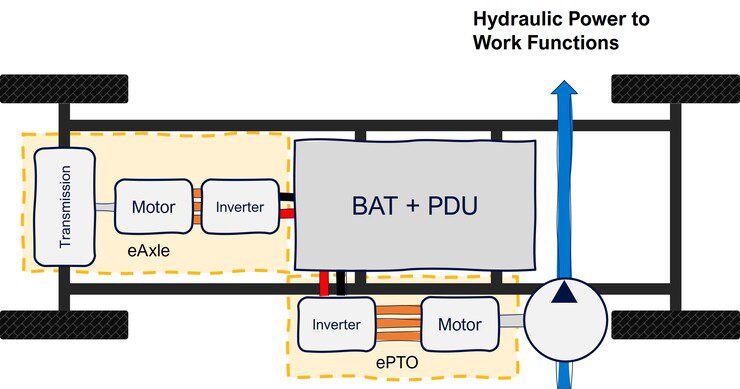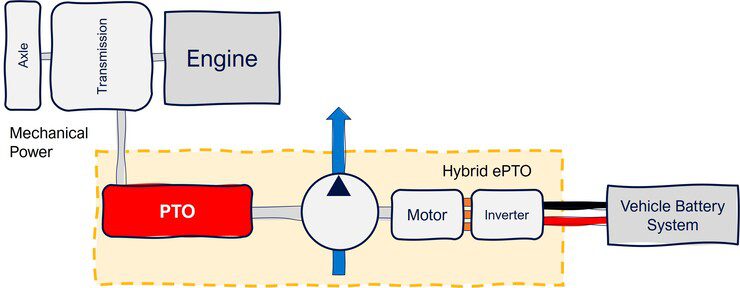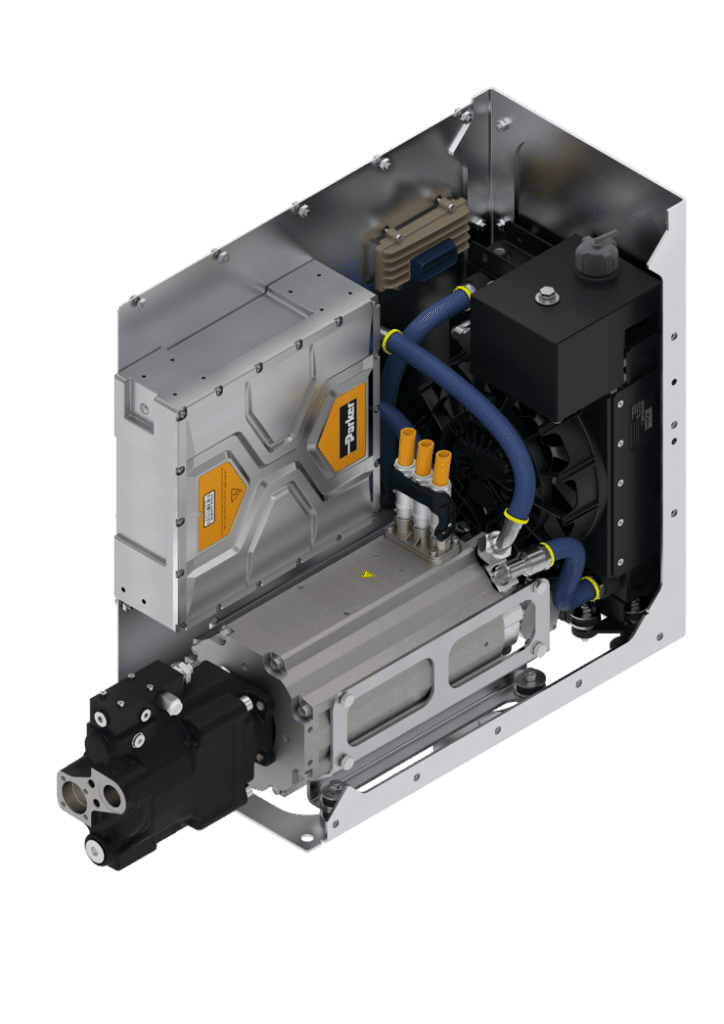How ePTOs Are Reducing Bucket Truck Costs, Noise, and Emissions
Without a doubt, the future for bucket trucks is bright, with significant growth projected for the category partially as a result of the extensive infrastructure upgrade programs that have been approved in the U.S. and abroad. One possible barrier to this growth is the fact that these trucks are expensive. They cost a lot to purchase and maintain. However, there are a number of truck design improvements that are significantly lowering total cost of ownership (TCO) while simultaneously improving safety, fuel efficiency, and environmental impact. This article addresses one of those improvements—electric power take-offs (ePTOs).
While fully electric bucket trucks aren’t common yet, ePTOs allow hydraulic lift functions to be powered by an electric motor instead of a diesel engine. This enables operation of the boom without idling, significantly improving fuel efficiency and reducing emissions. For companies focused on greening their fleets, ePTO bucket trucks provide a sensible first step toward electrification.
What Are ePTOs and How Do They Work?
Unlike traditional PTOs, which ultimately pull power from the truck’s engine, ePTOs operate using electric motors and inverters. This allows the hydraulic lift and bucket functions to be powered independently from the engine, eliminating unnecessary idling while the vehicle is parked at the job site. With the right sensors and system architecture, operators can engage the electric motor when commanding function movement from the bucket. This concept essentially allows the fleet to capture the energy that would otherwise be spent through idling while the bucket and boom aren’t moving, which, in most cases, represents the vast majority of the vehicle’s duty cycle. This equates to reduced fuel consumption, lower emissions, and a quieter operation.
Typically, an ePTO system consists of a hydraulic pump, an electric motor, and an inverter connected to a direct-current (DC) power source such as a battery. A rechargeable battery powers the ePTO (Figure 1) and is designed to hold its charge long enough for the operator to complete a day’s work. Bucket trucks are an ideal application for this technology, as most return to a base at the end of the day where they can be recharged overnight when energy costs are at their lowest.

However, if the truck needs to stay on a job site for multiple days, then a hybrid vehicle approach may make sense to leverage both the energy capacity of a fuel tank and the power-on-demand concept realized with an ePTO. This system architecture consists of both a traditional PTO and an ePTO driving the same pump, illustrated in Figure 2.

When the operator works the truck long enough to deplete the battery supply, the engine will kick on and engage the PTO. At that point, the pump is being driven by the engine. However, because the electric motor remains coupled with the pump, it begins operating as a generator by using the remaining available engine power to charge the battery. Once the battery is re-charged to an acceptable level, the PTO disengages from the engine and the system returns to engine-off operation.
Emissions Reduction
Making the switch from a traditional PTO to an ePTO is trending because it significantly reduces idling, which, over the entire duty cycle, can really add up in emissions decreases, depending on how the vehicle is being used. Consider, for example, the case of a 37,000 GVWR (gross vehicle weight rating) bucket truck that uses 1.5 gallons of diesel per hour while idling with the PTO. If a bucket truck idled to power a traditional PTO six hours a day, five days a week, over the course of a year it would burn 2,340 gallons of diesel.
Burning diesel fuel emits 22.45 pounds of CO2 per gallon, meaning just one bucket truck could reduce carbon emissions 5,253.3 pounds simply by leveraging the power-on-demand benefits of the ePTO. But idling aside, electric motors and inverters together are significantly more efficient in transferring power than an internal combustion engine, which means you’re also cutting the energy consumption by a third when function movement is needed.
Lower Maintenance Costs
Beyond reducing emissions, ePTOs can also help reduce maintenance costs. When a truck idles to power a traditional PTO, engine hours may suggest it’s time for maintenance, even though the truck may not have traveled enough miles to warrant service. Using an ePTO, in contrast, requires zero engine hours, so bucket trucks are maintained at proper intervals, and fleets spend less on oil, parts, and other supplies, as well as technician labor hours.
An ePTO also puts less stress on the engine, allowing fleets to extend the lifecycle without increasing maintenance costs. Cutting out idling also reduces fuel costs. In the example above, the bucket truck equipped with an ePTO uses 2,340 fewer gallons of diesel per year. At $4.50 per gallon, that’s a fuel savings of more than $10,000 per year for a single truck. Over the life of the truck, that’s a significant reduction in TCO.
Noise Reduction
With an ePTO, bucket trucks can additionally contribute less to noise pollution. Excessive noise doesn’t just disturb the neighbors, it also creates safety risks if workers can’t clearly communicate with each other on the jobsite.
Because a bucket truck’s engine doesn’t have to run to operate the boom, the only time an operator and others nearby encounter engine noise is when the truck must move. With bucket trucks, that’s not very often.
Making sure pump and motor speeds aren’t under- or over-speeded is one way to reduce this noise. Systems can also be designed with dampeners, like rubber mounts and other dampening materials, to further reduce noise.
Pairing a quiet or zero-noise pump with an ePTO is an ideal option (Figure 3) for bucket trucks that operate in environments where noise reduction is important, like a residential area or golf course. With less noise, these trucks can work extended hours—even late into the evening—until a problem is solved without concerns about noise complaints.

ePTO Bucket Trucks Are a Sustainable, Cost-Effective Option
As infrastructure and utility projects ramp up globally, ePTO bucket trucks provide a sustainable, cost-effective way to meet demand while improving community relations. This technology proves environmental and business goals can go hand in hand.
As you set out to design the next generation of bucket trucks, make sure that you select a manufacturing partner that can provide the components and engineering expertise to capitalize on the latest trends and technologies.
—Tom Hickey is a systems application engineer-Electrification for Parker Hannifin.